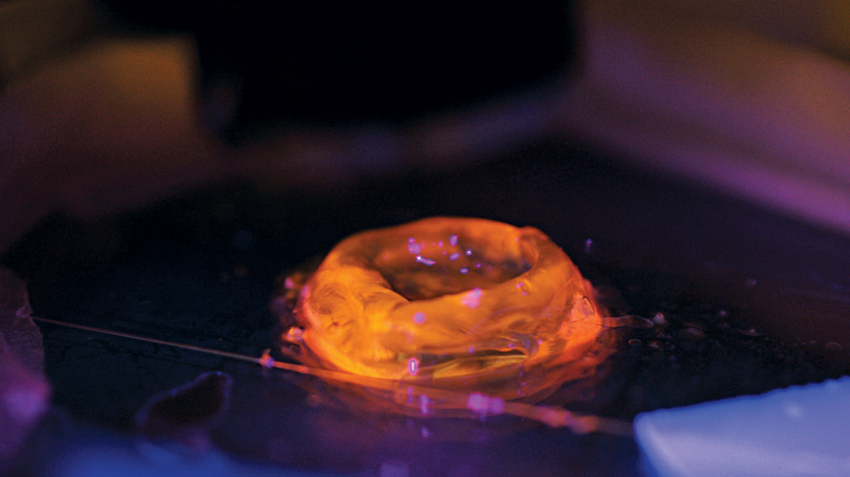It’s Alive: 3-D Printing Living Tissue

Photography Courtesy of Brigham and Women’s hospital
Three-dimensional printers have been making it cheaper and simpler to manufacture everything from custom sneakers to rocket parts—even if you don’t have a factory at your disposal. Now Boston-area researchers are using the same underlying technology to create living, healing things: cells, tissues, and other biomedical structures that can be printed on demand.
Harvard’s Wyss Institute of Biologically Inspired Engineering, for example, is working on developing human tissue that could be used in the future as internal bandages. Bodies can heal small wounds naturally, but if a wound is above a critical size or too severe, it won’t heal on its own, says Jennifer Lewis, a professor at the institute. “By laying [the printed tissue] on top of the wound or placing it in the wound through surgery, it would integrate with your body and become a part of you,” she says.
Ali Khademhosseini, an associate professor of biomedical engineering at Brigham and Women’s Hospital, is working to print heart-tissue pieces from a cell-laden, ink-like substance. His lab hopes to engineer these tissues for transplantation, so one day organ donation would become obsolete. And while 3-D printers can already turn out synthetic hip and knee replacements tailored specifically to a person’s body (currently awaiting approval), Khademhosseini and other researchers are looking to print cartilage and bone to replace implanted metals and plastics completely.
The technology is not as far-fetched or as far off as it seems: Lewis anticipates he’ll be able to work on animal models within five years.


